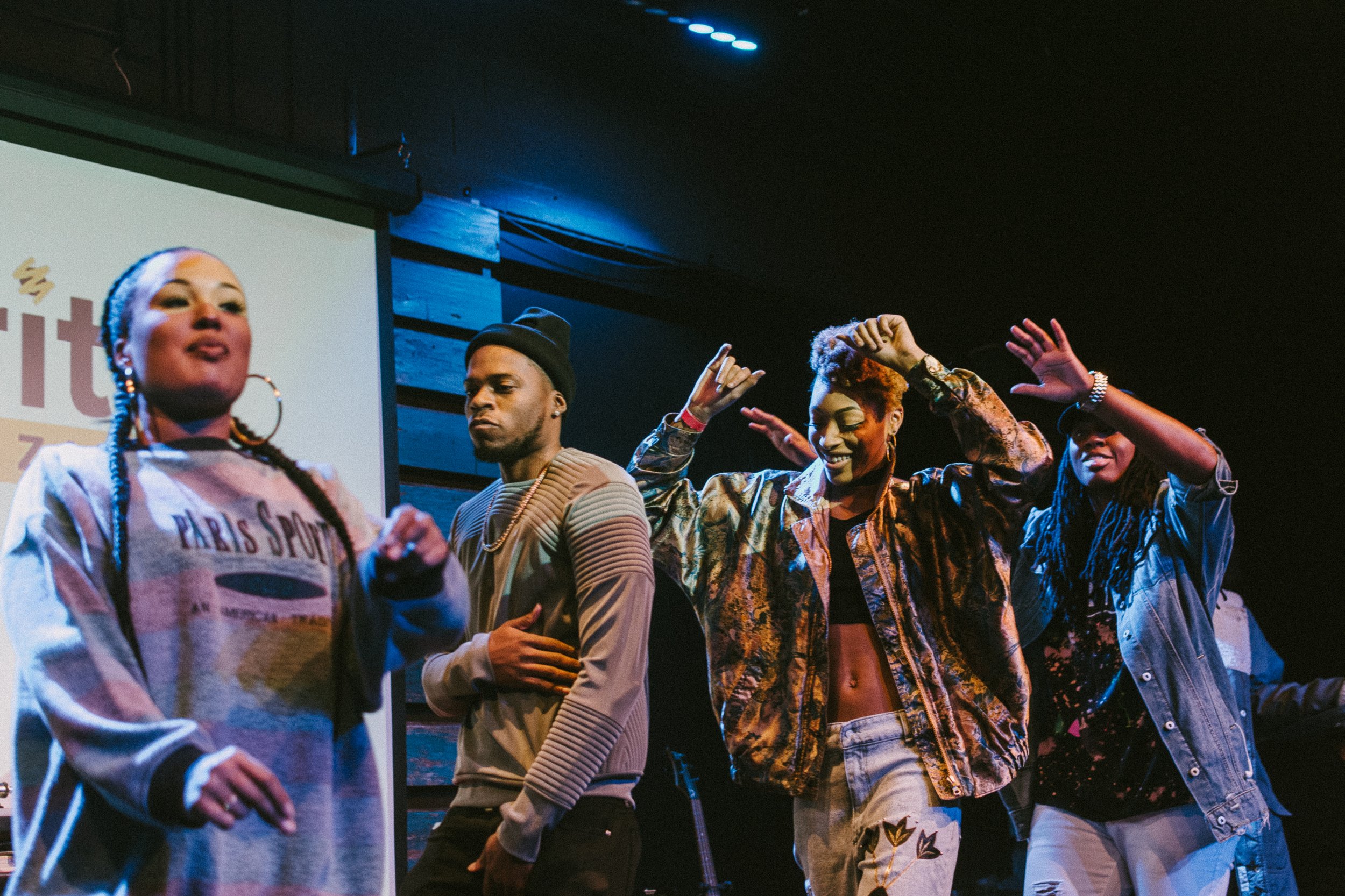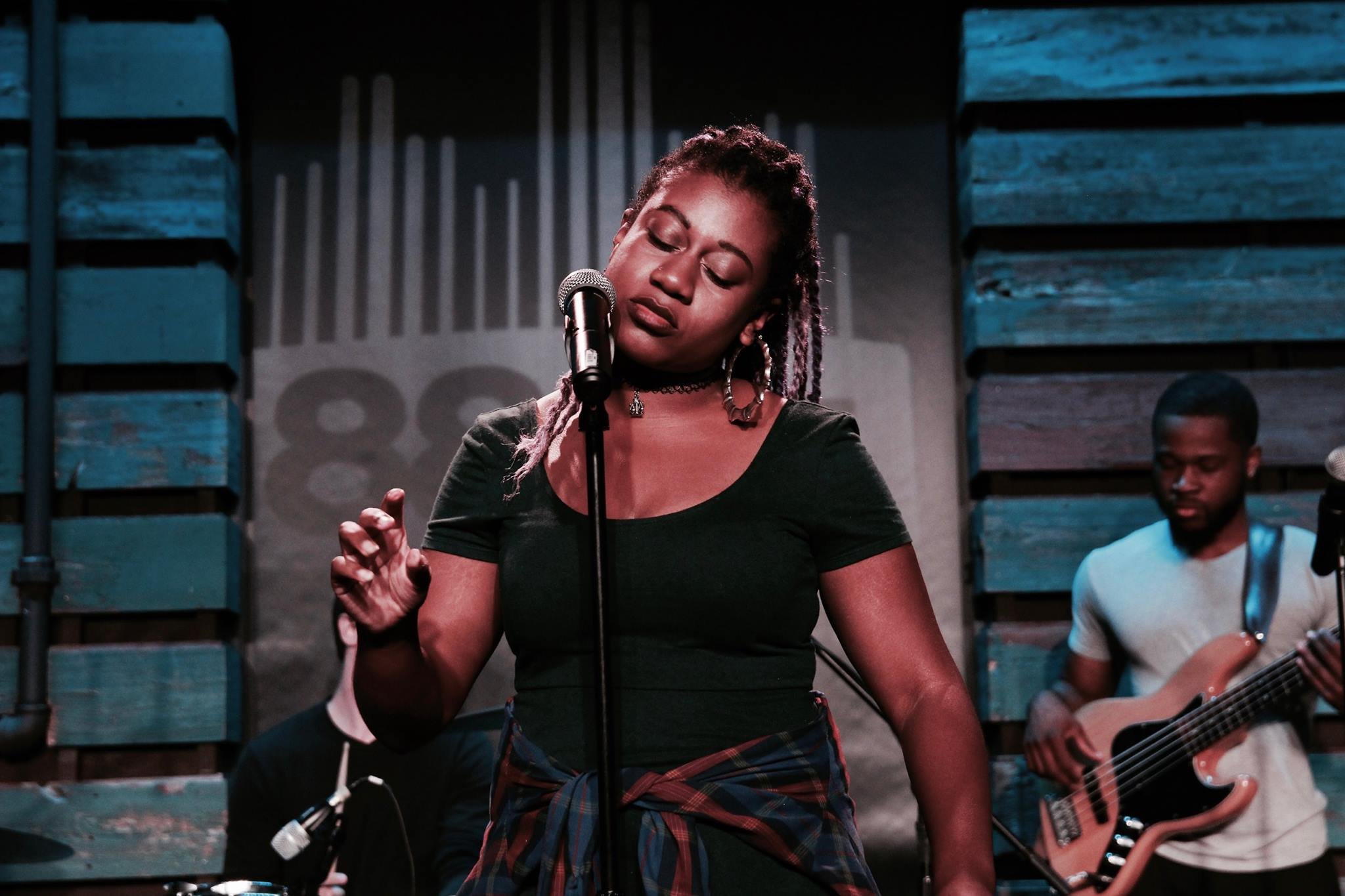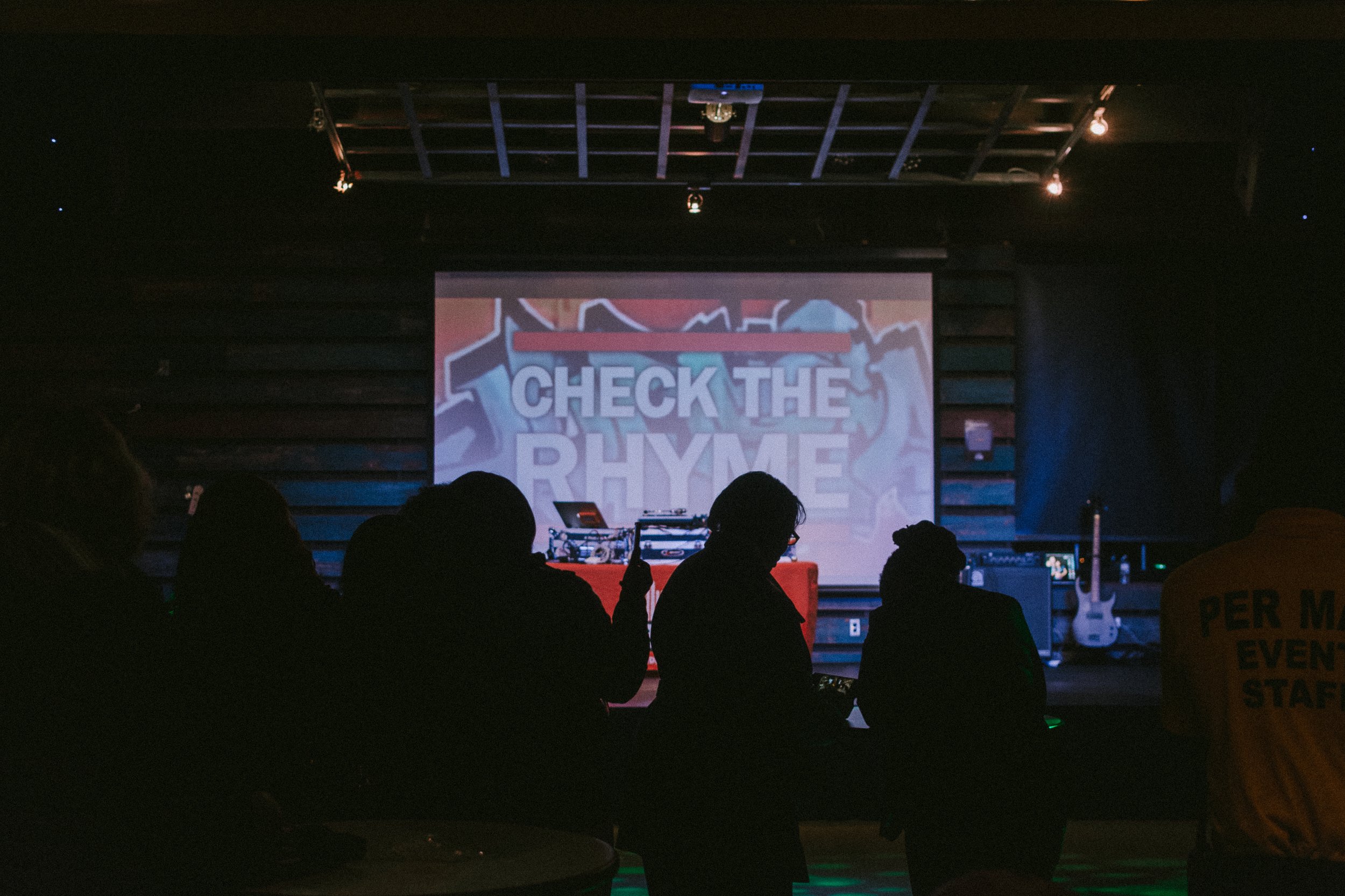Snap Shot Press Release: Cultural (big “C”) Complexities | Milwaukee Film Festival 2022
/It’s the smell of popcorn topped with butter, salt, and yeast (let's call it a brew city delicacy). It’s the sky blue backdrop (also known as a step & repeat) adorned with a white iris-like logo that screams “pose for the camera”. It's the ornate walls and the grandiose statues of Buddha, watching in an omnipotent way. It is the marquee that has read many titles and that knows many stories. It is the Milwaukee Film Festival taking on its true form; re-emerging on the big screen.
CopyWrite’s coverage of Milwaukee Film Festival 2022, is a compilation of perspectives, trying to sample the ample platter of cinematic programming that was served. Where in past years our favorite moments have always been the local music videos and documentaries that comment on creative communities, this year we navigated the Cultural (big “C”) complexities of film in multiple genres, advancing our engagement in Black Lens programming, and of course, indulged in all things Milwaukee specific. As a Community Partner for four films this year, we felt even more involved in the action and how our audience might engage with everything that Milwaukee Film Festival had to offer. The most exciting part is that many of the perspectives we will be sharing here are from journalists who are first-time festival-goers, whose naivete in what to expect created opportunities to just experience the moment and view the world through many curated eyes.
Community Partner Film Selects
BEBA [Director: Rebeca Huntt]
Rebecca Huntt, a young Afro-Latina woman from New York, allows us to travel with her through history as she recalls her childhood. BEBA, from toddler to adolescent, is faced with challenges like many of us. The unspoken, but identified, generational trauma she experiences has cultivated her into the woman she is. The anger she exudes when things don’t go her way, the coping mechanisms she’s learned along the way, everything no matter how bad or good, it’s BEBA. She eloquently displayed the attitude of “if you don’t like it, you don’t have to deal with it”.
I especially admired the vulnerability of the entire film. We see first hand how the generational trauma and mental illness takes a toll when she interacts with her mother versus her father.
The reason I admire this is because the dynamic of mother and daughter relationships is being highlighted and it’s something I believe should be talked about more. Her mother constantly victimizes herself and places the label of “aggressor” on BEBA. Meanwhile, the interactions with her father are more relaxed and calm, as if she feels more secure or safer there. She even depicts the most traumatic moments of her life like losing her former lover to suicide. I think the karaoke scene was the most touching, I actually cried mid-scene.
Another notable moment consisted of BEBA and three of her White friends having a conversation about “Black Lives Matter”. The frustration BEBA got was sent through the screen. Honestly it was a comedic but empathetic moment because as funny as it is when people try to “white-splain” (is that a word? We just made it one if it’s not) Black issues, it’s also SO frustrating and tiring to constantly have to be the mouthpiece for the Black voice. “WHY AM I THE ONE WHO HAS TO ANSWER THAT?”, she annoyingly screams to her roommates. James Baldwin describes this as something called “the burden of representation”, the idea that ONE Black person must speak for and advocate on behalf of all others simply because they’re Black.
This activated some thought provoking conversations in the movie and a simultaneous roar of laughter from the crowd. I could go on and on raving about this film, but all-in-all BEBA was amazing! Rebecca Hunt is a prodigious screenwriter and I can’t wait to see more from her!
/Pam
LET THE LITTLE LIGHT SHINE [Director: Kevin Shaw]
“Let The Little Light Shine'' by Kevin Shaw was extremely moving to say the least. This film entails and follows the journey of a self-made prestigious, predominantly black elementary school community that fights against Chicago Public Schools to maintain their status as an elementary school. Parents, students and staff work day and night to prove that the school's community is more than just protocol, it's a family. Through pain, protest and lots of turmoil, this documentary catches the heart strings of its viewers while also bringing awareness of a much bigger crisis in Chicago: The mass closings of schools. This is an extremely important film because of the parallels it exposes to our very own public education here, in Milwaukee.
Milwaukee is no stranger to pain and protest as we’ve made national news for it several times. The power of protest is something that’s unexplaining. It’s an experience you have to be a part of to really understand the emotions and willingness to break societal norms in order to make sure your voice is heard. Countless times in this particular film, they found themselves civilly disturbing conversations about destroying their community. What does this look like? This looks like taking people to the streets and in buildings to be heard and seen. This looks like sacrificing your normality. This looks like sacrificing respectability politics. This looks like taking control of the narrative. This looks like getting external help. This looks like hiring lawyers and making noise about mistreatment. This film shows you that in black and white. It’s not hard to digest, it’s not overtly biased, it is just their truth.
The truth is that it’s not a “Chicago” issue. It’s a national issue and that includes Milwaukee. It’s been known for quite some time that Milwaukee Public Schools is not at all what it could be at its full potential. After countless school closings and poor funding, MPS has been diminished to a similar situation with school overcrowding and strained educational resources. I feel as though this film can spark a new conversation about modern education in other cities outside of Chicago because the film shows that with persistence and protest, anything is possible. There is light at the other end of the tunnel.
/Imani
Queen of Glory [Director: Nana Mensah]
Our imperfections, upbringing, and lived experiences make us who we are, but how we choose to project them defines what the world sees us as. Nana Mensah’s, Queen of Glory, is a prime example of the cultural complexities of the human experience. It was comedic, reflective, and gave commentary on multifaceted lifestyles. Sarah, also played by Mensah, was brilliant, considering how publicly deprived she is of her true self. Who are we when no one is watching? It is a question that I kept mulling over after seeing the film and it unearthed an analysis of “expectations” society fosters.
Losing a parent is a traumatic experience that most of us are expected to encounter at some point in life. And for those of us who have “tasking” relationships with our parents the ability to navigate their final wishes will seem burdensome. For Sarah, it was clear that she had some obligatory responsibilities to her mother's business and social affairs. But as a first-generation Ghanaian-American, her mother's Christian bookstore and multi-celebratory funeral were not the situations she was trying to get mixed up in. But who is going to do it? Who is going to take on that role if you decide to neglect it? Not her father who was fighting his own disrespectful ways of coping [Get that ol’ heffa out of her mama house sir!]. But Pitt, a Tattooed faced felon played by Euphoria’s Mouse [Meeko Gattuso], just does not fit the “stereotypical” profile of a good guy [But see it’s the Bible Bars keeping that store litty]. Oh, and that life that she thought she had set up in Ohio was a bust [ you can’t run from your problems, they always catch up.]. The expectations were the issue, the choices decided from taking L’s in the lived experiences were the solutions. Everybody was wrong from one perspective and right from another. It was something like, an unbalanced balance.
With authentically warm cinematography, and the interwoven cultural practices depicted, Queen of Glory is a film that leaves the audience with a voice that is not often heard. Because listen. . . When she took those tracks out of her hair, I sighed with relief to see the woman she truly was.
Not just some women, but a “Queen” of glory
/Lexi
THE MILWAUKEE SHOW I
We had the pleasure of viewing this years’ screening of “The Milwaukee Show I” at the Milwaukee Film Festival. This particular showing is a very popular event, as it shows 10 different shorts, films, documentaries and music videos that allow us to be immersed into different cultures, ideologies and communities. The best part? While their films may have global influence, the filmmakers are locals! I got a chance to hear from some of the many directors about their films:
Britany Gunderson, Director of “Building an Edge'', described the short film as “Seeking out the edges of a landscape you've never been to, we keep finding ourselves at the center of something.”
Inna Dmitrieva, Director of “Landays”, enlightened us on how they couldn’t show the woman who was reciting lines for the film for security reasons, as women do not have certain freedoms in Afghanistan.
Diya Gitanjali Mark, Director of “The Waiting Room”, says her inspiration for the purgatory-like film was actually Spotify’s Wrapped feature. She thought “What if we saw our lives wrapped after death?”
Barry Paul Clark, the Director of “Enough is revealed in the way you wait, and in the way you leap”, shared with us that he improvised all editing while listening to his very own album. Talk about inspiration!
Justin Goodrum, Director of “The Stigma of the Durag” said during the Q & A following the screening that, “I’m still learning as a filmmaker how to take what happens in my personal life and change them into cinematic moments.”
Hearing from all of these directors was vital to me because they all carried themselves completely different – just as their films were. Some were shy, some were confident, some were very straight to the point but all flowing with their film.
Considering I’ve never been to a film festival before, this was a perfect introduction into the world of film. I was extremely impressed with the variety of content and genres during this specific show of screenings. It didn’t seem as if there was another underlying theme besides the directors being locals, which is important because it was still cohesive. A lot of times when seeing films too similar in nature in one sitting, it can be aggy and uninteresting after a while. The idea of ‘local minds creating global insight’ is a powerful message to send in a city that's considered to be filled with underdogs. With a show as meaningful and complex as “The Milwaukee Show I,” I would gladly stop by again next year and the year after that!
While CopyWrite is a proud community partner of the Milwaukee Film Festival, what makes our job even easier is digesting top tier content. The Milwaukee Show is not something you’d ever want to miss.
/Imani
#ForTheCulture [& other /CW Like Things]
Bitch Ass [Director: Bill Posley]
First, let me set the record straight. I don’t do horror films.
I’m leery when it comes to things that could happen in real life [like psychopathic neighbors, demon summoning Brujeria, killer A.I. taking over the world]. I mean, seriously, I get spooked [‘cus anything can happen LOL]. So how did I wind up attending Bill Posley's urban horror flick Bitch Ass? Well, it was the trailer at the Black Lens kick-off event that pulled me in. With the original CANDYMAN, Tony Todd, giving a pensive yet comedic narrative of the tale we would be watching unfold, I was torn between laughter and fear, and I had to find out why.
It was ridiculously EPIC!
There was not enough popcorn, candy, or vodka spritzers in the theater to keep my mouth stuffed enough to stop me from talking to the screen [which is usually a frowned-upon practice in a public setting] but I was not alone. Voices from around the theater chimed in with laughter, blurts of disbelief like “How Sway?”, and the effervescent rounds of “Oh Hell Naw!”. It was crazy and culturally comforting because if you know the joy of a good Blaxploitation film you know that it is the margin of familiarity that gets you going. The “common” characters of “urban” life [read between the lines] looped into this not so “fun house” and those ‘80s Street Fighter game-like graphics were just the right balance of humor to displace the blood splatter and torture that would normally have me gripping my seat in a panic.
What Bitch Ass provided was a moment to be unapologetically unprepared for a movie. I could have never anticipated where the story would go, and how engaged the audience would be with the film. But just like many other horror films, there was a lesson to be learned. . . watch how you treat people. You never know when their “bitch ass” is going to come back and f*ck you up!
[Explicit vocabulary required *wink wink*]
/Lexi
Check out post-audience reactions to Bitch Ass, captured by Tanasia Shaw [ /CW Intern Journalist].
Black Lens Shorts: Black Love Through a Black Lens
For the 2022 Milwaukee Film Festival, we attended the screening of “Black Lens Shorts: Black Love Through a Black Lens”. This collection of shorts truly details Black love through different lenses, as it not only focuses on the intimate love between two people, but the love for our culture and the love we have for one another as Black people. From the first film to the last my eyes were attached to the screen, I thoroughly enjoyed each film starting with Friendzone LA.
Friendzone LA [Director: Angel Kristi Williams]
At first, I was surprised by the fact that there was no dialogue between characters in the film, only music. But the soulful sounds of the R&B music and the chemistry of both friends spoke louder than any script. It seems innocent enough but as the 3 minute film progresses, the love that this man has for his best friend becomes noticeable and I start to understand the title. Director, Angel Kristi Williams really highlighted how silent adoration can speak volumes.
Gales [Director: Ingred Prince & Tshay]
This was my absolute FAV! Nurse Indigo is trying to balance a work/school life and a love life. In the interim she runs into so many obstacles. One friend’s encouragement and another’s discouragement, mixed with her need to study for nursing school, pulls her back and forth but ultimately she decides to treat herself to the date. The whole plot of the movie is so relatable, for one because as a Black woman I can say that I find it hard to find a balance between work and pleasure because of the minuscule amount of guilt that trails my decision if I choose the latter over work. And just when she FINALLY makes the decision to choose pleasure, she OVERSLEPT for the date and misses it! I was in the theater punching the air y’all! Overall, I loved this film. It was funny, it was relatable, and it kept me engaged. Shoutout to Ingred Prince and Tshay on their amazing film.
Pure [Director: Natalie Jasmine Harris]
I loved this film in its entirety. The main character lives a life that’s been defined by others: how she should live, how she should love, what love looks like, etc. It’s amazing to watch her come into the discovery of what she truly likes no matter what anyone else thinks. I especially loved the ending at the cotillion when she danced with her lover in spite of what others may have thought. Love is love, and no matter where you come from or what others may have taught you to believe, love will always be love. Natalie Jasmine Harris, thank you for this experience.
Things At Rest [Director: Desirae Lee]
All I kept repeating as I left the theater was “GIVE ME BACK MY STUFF!!” If you’ve seen “For Colored Girls” or “Beauty Salon” you’d understand the feels that this film gave me. The parts of both of those movies where the elders recited spoken word to uplift their sisters was so similar to Things At Rest. The tribal dance and the clips of Black aesthetics! This whole film was like a compilation of how dope Black people are and I lived!
Reasons [Director: Yvette Pabon]
This SHORT film needs to be an entire film. Y’all remember how Brenda was in the movies on “Scary Movie”? That was ME! “I know he didn’t just hit her!!!” “Why doesn’t she just date the milk man?” “I KNOWWW he ain’t cheating in a house he don’t pay bills in, I just know”. The main character struggles with being a single mother and truly understanding her value as a partner, so much so that although she really likes one guy, she can’t seem to escape the other. And the reason this was so good to me is because it speaks volumes about “broken homes”. They’ve always been defined as places where two parents aren’t together but the REAL brokenness comes from the forcing two people to tolerate each other for the sake of their child. She moves away from this narrative as she stands her ground and advocates for herself and her happiness. And in the end she got the fairy tale ending! 10/10 I loved!
Pink and Blue [Director: Carmen LoBue]
Director Carmen LoBue tells a story of a trans couple who’s expecting a new baby. The conflict of the film comes from within the relationship, contrary to what I thought before the film started. From misgendering their child to figuring out just how they will raise their baby in a world so set on labeling everyone, this couple is determined to succeed in this thing called parenting.
You Can’t Stop Spirit [Director: Vashni Korin]
I almost booked a flight to New Orleans after I saw this film. Because before this, I never knew much about Mardi Gras culture. The Baby Doll masking tradition is something started by Black women that allows them to be free and liberated and unapologetically Black. The costumes are beautiful and the honor of becoming a Baby Doll is something that’s coveted by young women all around New Orleans. This powerful ensemble of women sent a vibration through the cinema.
Postmates [Director: Grasie Mercedes]
This film was simple but the message was clear as day: PAY ATTENTION TO YOUR SPOUSE! The wife is bored with everyday life, her routines are becoming mundane. So to get excitement, she constantly orders Postmates and entangles the delivery driver into a web of conversations and “therapist” like questions, leaving them in a mist of confusion as her husband comes home and forces her to release them. And to some people, this would be an obvious sign that she needs companionship. But her husband seems oblivious to the fact, maybe it’s because he’s consumed by working 12 and 16 hour shifts or maybe he truly doesn’t notice. But in the end, her feelings go unnoticed and her husband goes to bed. I feel you girl, I feel you. Shoutout to Gracie Mercedes for being a voice for women who go through this silently!
Seeing that this was my first film festival, I had no preconceived notions. I didn’t know what to expect but what I received was an authentic, enlightening, comedic and heartfelt experience. Each of these films, none lasting any longer than 22 minutes, taught me some sort of lesson at the end. Whether it was to appreciate your relationships or prioritize self care, I was highly satisfied with each film of this short series and I can’t wait for next year!
/Pam
Look At Me: XXXtentacion [Director Sabaah Folayan]
As Milwaukee Film Fest neared its conclusion, a film tribute to someone who was larger than life was a proper end to this celebration of the cinematic mastery and video documentation.
Look At Me is a grand opportunity to get an unveiled view of the lifestyle of JahSeh “XXXtentacion” Onfroy. Director Sabaah Folayan and Producer Chloe Campion carefully and honestly depicted the high highs and the low lows of this modern day rockstar, with the grace of his mother Cleopatra Bernard, they were able to artistically guide us through his musical journey, from his serendipitous beginnings to his rise to fame becoming the voice of many troubled youth, to his tragic murder in 2018. This film exposed him to be as imperfect as they come; as imperfect as anyone else.
Many dynamics and relationship perspectives were given from friends like rapper Ski Mask the Slump God, his mother, his ex-girlfriend, and we even were given a short glance of the fatherhood situation that would have become an addition to his life just before his death. Though there were a few broken hearts leaving the theater due to the disappointment in ‘X’s reality, this film shows that telling all stories is of some importance and that the motivation to live a good life can come from the darkest of moments, even when they are not your own.
/Naomi Rea’
GRAIN [Directed by Alex Contell & Tomasso Sacconi]
Through the literal lens of professional and beginner photographers, whether published or just an admirer of the everyday Kodak Moment, GRAIN brings forth the pride of analogue and the weight that it holds in a digital age. For anyone in the audience who is a fan of film photography, watching the process from lens to dark room would be nothing short of satisfying. Many would detest a full length film dedicated to film, but there is a humanity in the art that Directors Alex Contell and Tomasso Sacconi deemed worthy to capture. If this film does anything it will prove two things to be true:
1. In a physical world, physical mementos are good for the psyche
And -
2. The ways of old will always find their way back to the present
Seeing film on film is just different.
/Naomi Rea’
Honorable Mentions
The Exchange. In White America. Kaukauna & King 50 Years Later [Director: Joanne Williams]
In 1966, during the Civil Rights era, students from Rufus King High School and Kaukauna High School participated in an exchange program that culminated in a production of Martin Duberman’s play ‘In White America.’ Over fifty years later, the original students who participated were able to come together with a new generation reprising the play at King. I got the chance to speak with Joanne Williams, the mastermind behind this documentary, and find out how this all came about.
CW: “You said you started this back in 2016, how are you feeling at this moment now that the public is able to see this film you’ve been working so hard on?”
Joanne: “I was very happy that they laughed in the right spots and cried in the right spots. I think everybody got the message of the film which is empathy, optimism and hope. I’m glad it’s now out in the world.”
CW: “What would you say was the hardest part about putting it all together? Because like you said, there was a lot of film to go through. Was that the toughest part you would say?”
Joanne: “No, the toughest part was raising the money to pay for it, which I’m still doing. It won’t all be paid off for a while, but that was very difficult.”
CW: “Is there somewhere people can donate?”\
Joanne: “Yes, you can send a check to Milwaukee Film in care of The Exchange.”
CW: “The part that was interesting to me was the actual exchange, it was deeper than just the play. And I see what type of benefit that it really had for the community to do it. Do you think that it would be beneficial to keep that going with MPS schools and suburban schools that we have throughout Wisconsin, so people can see both sides?”
Joanne: “Well it would have to be an exchange like they did at Kaukauna and King. Not just a day or two. . . they literally lived with families for a month in both communities and they were immersed in their communities. So I think it would be worth it but it takes a lot of work to do that kind of exchange. If some school district or two school districts want to do that work, I say go for it! They can watch the film and be inspired.”
CW: “Exactly. Now with King, they just did the ‘In White America’ play back in 2016 and you had your hand in that, I’m sure that felt like a full circle moment, so how was it?”
Joanne: “It was pretty emotional. I was happy to be back in my high school and watch them do the play in the same classroom that I had theater classes in. And I was glad to see that 50 years later a new generation with a multi-ethnic cast could do the play.”
CW: “How did you get everyone back together again from 1966? We have social media now so it helps, but getting everyone together, was that difficult?”
Joanne: “Well, we didn’t get everybody, we got many of them. And it was difficult to find people because they’re [the original exchange students] all over the country. Actually, we got together on one day and did the interviews, so that was a big challenge. I’m still in touch with them and hope to talk to them in the future and let them see the film. But that was a big challenge. There were a lot of days that were very rough.”
CW: “What inspired you to create this film?”
Joanne: “I knew about the story. I had the story in the back of my mind and in the back of my files for 50 years. I just was busy doing TV news, anchoring and reporting and didn’t have time to devote to do this. After I retired and found this newspaper in a box marked high school stuff, as Christina said, we looked at the King’s page and said, ‘This is a story and it’s time to tell it’.”
CW: “And you are a great story teller so I feel like this is perfect for you. What’s next for you? Do you think you want to do more films or was this just the one film you wanted to do because it was a story that had significant meaning to you?”
Joanne: “I would like to continue doing films. I would like to work on other people’s films. But we have to get through this and then we have 10 other film festivals to which we submitted, so I may be going all around the country showing it at other festivals.”
CW: “What do you think the viewers here took from watching the film?”
Joanne: “I hope they got the feeling of how important it is to get to know people who are different from you, but you’ll have to ask them how they felt. I would love to hear what they thought!”
Although most of the people who watched the film were gone by the time Joanne and I finished chatting, I can honestly say I think the overall consensus of the film from everyone was well received. Like Joanne mentioned, you could hear and feel the crowd sharing the same emotions together either through a laugh or a cry and it was refreshing.
After all that the United States has been through the last eight years or so–being in the Trump era, the rise of the Black Lives Matter Movement and of course we can’t forget COVID bullying its way into our lives–it’s not often I find wholesome content that makes me have faith in humanity. However, watching The Exchange I was pleasantly surprised by the actions from Joanne Williams and her peers. With the exchange happening during the Civil Rights era, I wasn’t expecting to see the outcome be so successful. I would love to see if this type of exchange could work again today in 2022 mostly because I think with all that has been going on, there’s a disconnect between humanity. But if you want to make the world a better place, there’s no better place to start than with the kids – they are our future.
/Carrie
THE STIGMA OF THE DURAG [Director: Justin Goodrum]
Give Justin Goodrum his flowers, a big tub of wave grease, and a couple thousand dollars [if you have it], for his short film, The Stigma of the Durag. His film was noted as an honorable mention amongst for the Cream City Cinema Jury Award, [which if he had won would have given him $5,000] and was a part of the Milwaukee Show I [one of CopyWrite Magazine’s Community Sponsored showings]. The Durag, is a utilitarian-cultural symbol that has been worn through the intimate confines of the Black home, out through the multifaceted terrain we call neighborhoods, right into the media spotlight of Hip Hop, and now floor length interpretations are making appearances on the most prestigious fashion runways of the world [Society, you’re welcome!].
So why is there a disconnect between what a durag is and who wears them? Justin gave us the run down on his film and the narrative he is confronting for the culture.
CW: “The Stigma of the Durag, how did you come up with that concept?”
JG: “It actually came from a project that I am working on that is more of a narrative and a feature film. I wanted to include an experience that I had in college where I was putting my durag on at night and one of my roommates asked me if I was in a gang.”
CW: “I’m assuming this was a Caucasian roommate?”
JG: “Yes, and it was crazy because the thing is he really didn’t know and I always explain to people that my roommates were all cool. . .”
CW: “But if there is a cultural difference, where you are a person who doesn't need a durag or has never had that experience [outside of media] how would they know?”
JG: “Even the other producer on the project, I told him the scenario and even he didn’t know what [a durag] was.”
The producer had heard the term durag before and seen them but really was not sure what they were used for either. From that conversation The Stigma of the Durag documentary short was born. The documentary uses the “man on the street” method where they go around and ask people about their knowledge of drugs and provide cultural tidbits that define, and humanize the durag and its wearer.
JG: “Even with the incident that occurred to me, I never thought that people really did not know what [a durag is] or that they didn’t get. In popular culture, you see people saying a lot of things like ‘Bye Felicia’. Like a lot of people know [that saying]. . .”
CW: “But they don't knooooooow it.”
JG: “Right! So I just assume that they treat the durag like that.”
As we talked I discussed my understanding of the durag and how I have observed its cultural evolution of hair protection and maintenance, to it being as common as a baseball and fitted cap in the early 2000’s.
CW: “I just think it is so fascinating how it has transformed in use. People who don’t even need durags are wearing them.”
JG: “There is a portion of the film where you can see that. I think the biggest take away from the film is to take away the stigma or the baggage that comes with wearing one. I have a cousin that maybe 80% of the time I see him, he has a durag on. I mean he is spinnin’ [We both laughed because the cultural connotation of a Black person wearing a durag usually means that their “waves” or hair pattern is impressively laid out underneath]. So of course I know why he has it on. I know he is not in a gang or anything like that. I don’t want him to have to go out in the world wanting to look nice, and be judged.”
The judgment comes with more than just crazy looks and mumbling. It also comes with social projections, barricaded opportunities, and the assertion of hierarchical assimilation. So changing the stigma of the durag is another step in eradicating the plight against cultural disenfranchisement.
So next time you see a durag, ask yourself, “Are his waves on swim? Is that why they hate on him?” [Lol See POP culture can go two ways, if you know what I’m sayin’.]
/Lexi
See you next year, with more films to see and memories to make!
Love & All Things Urban,
/CW Fam





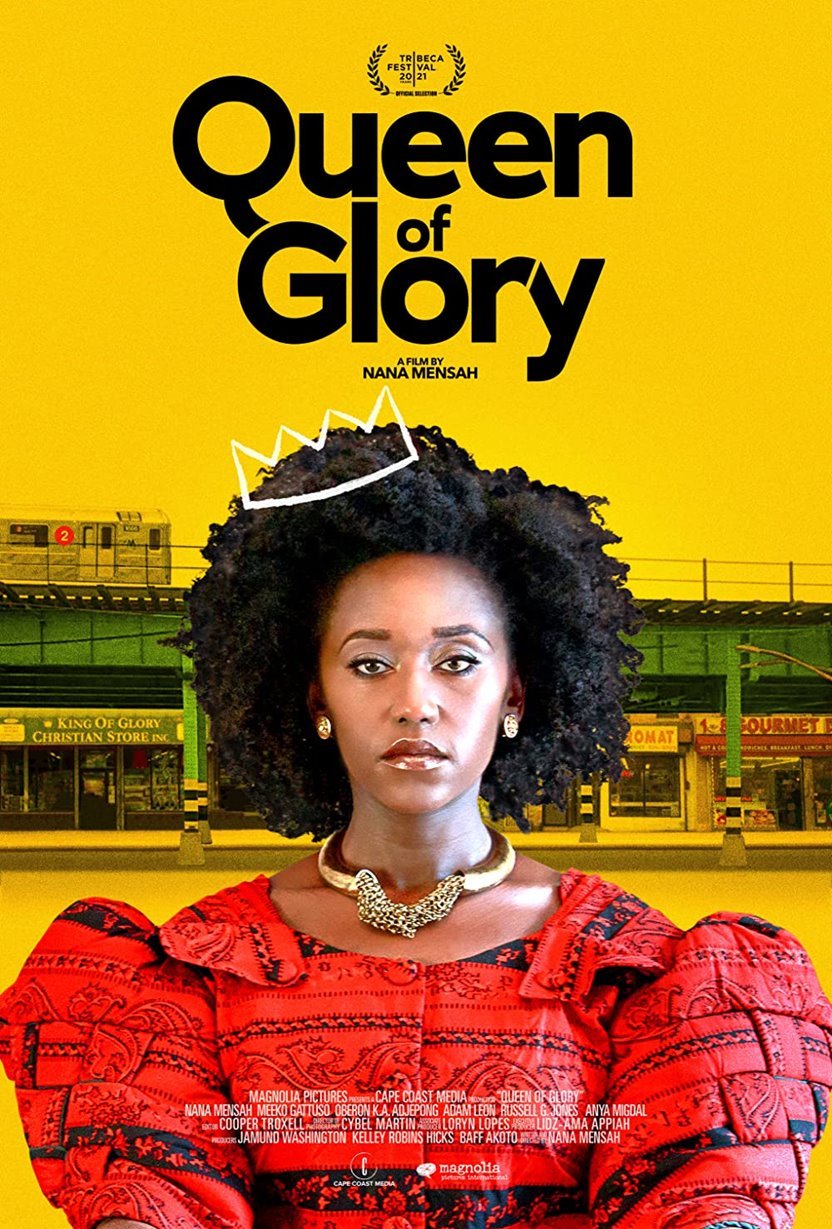

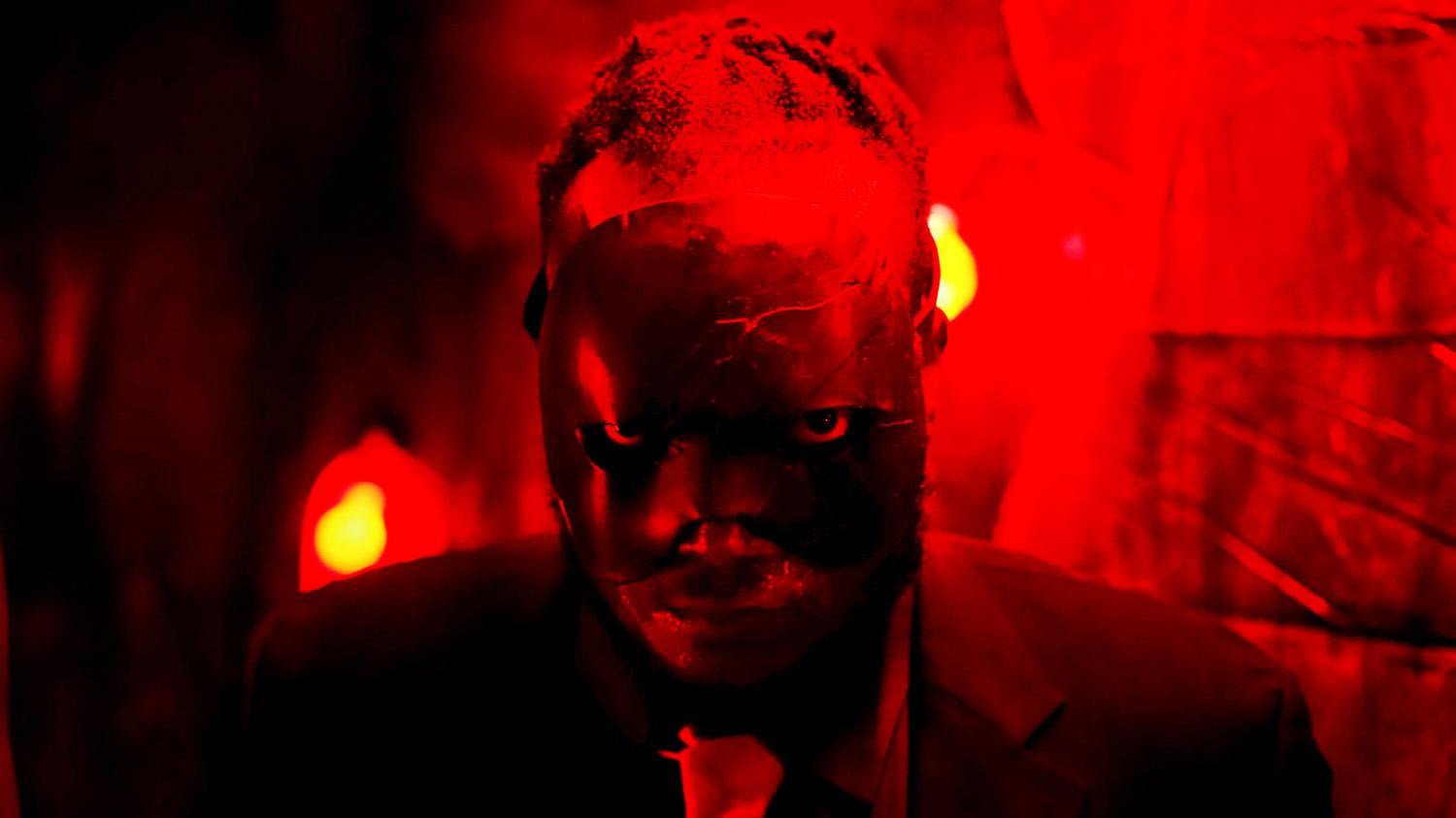
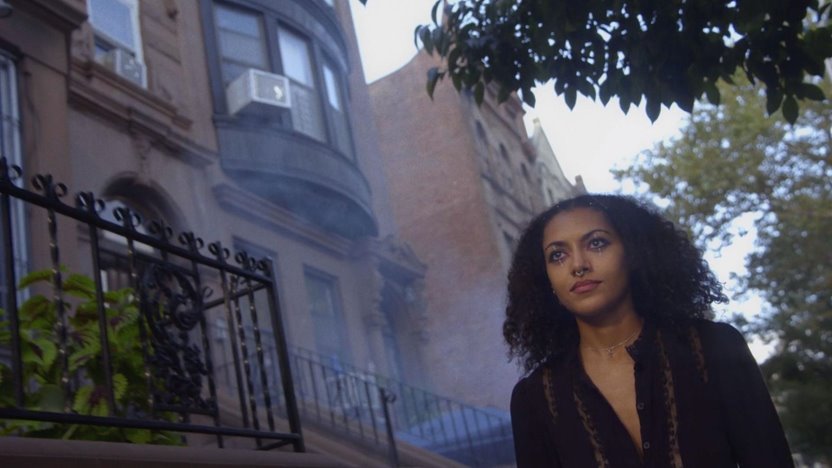



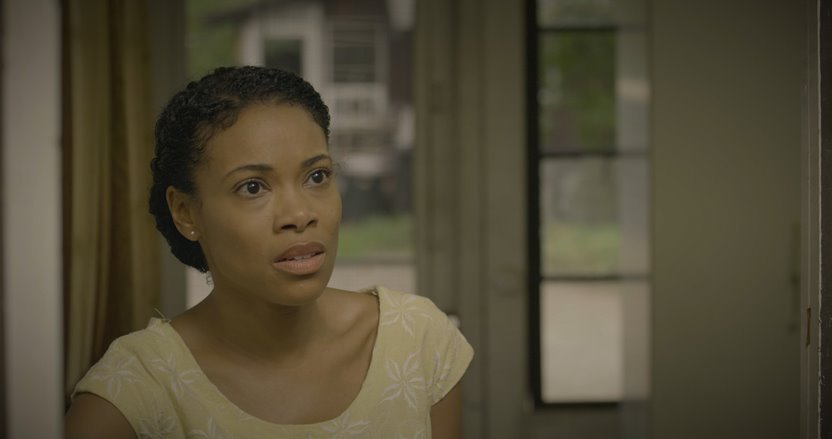
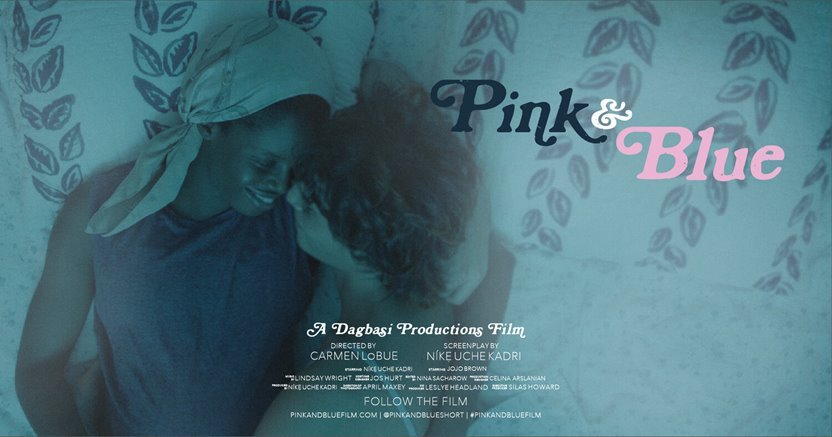





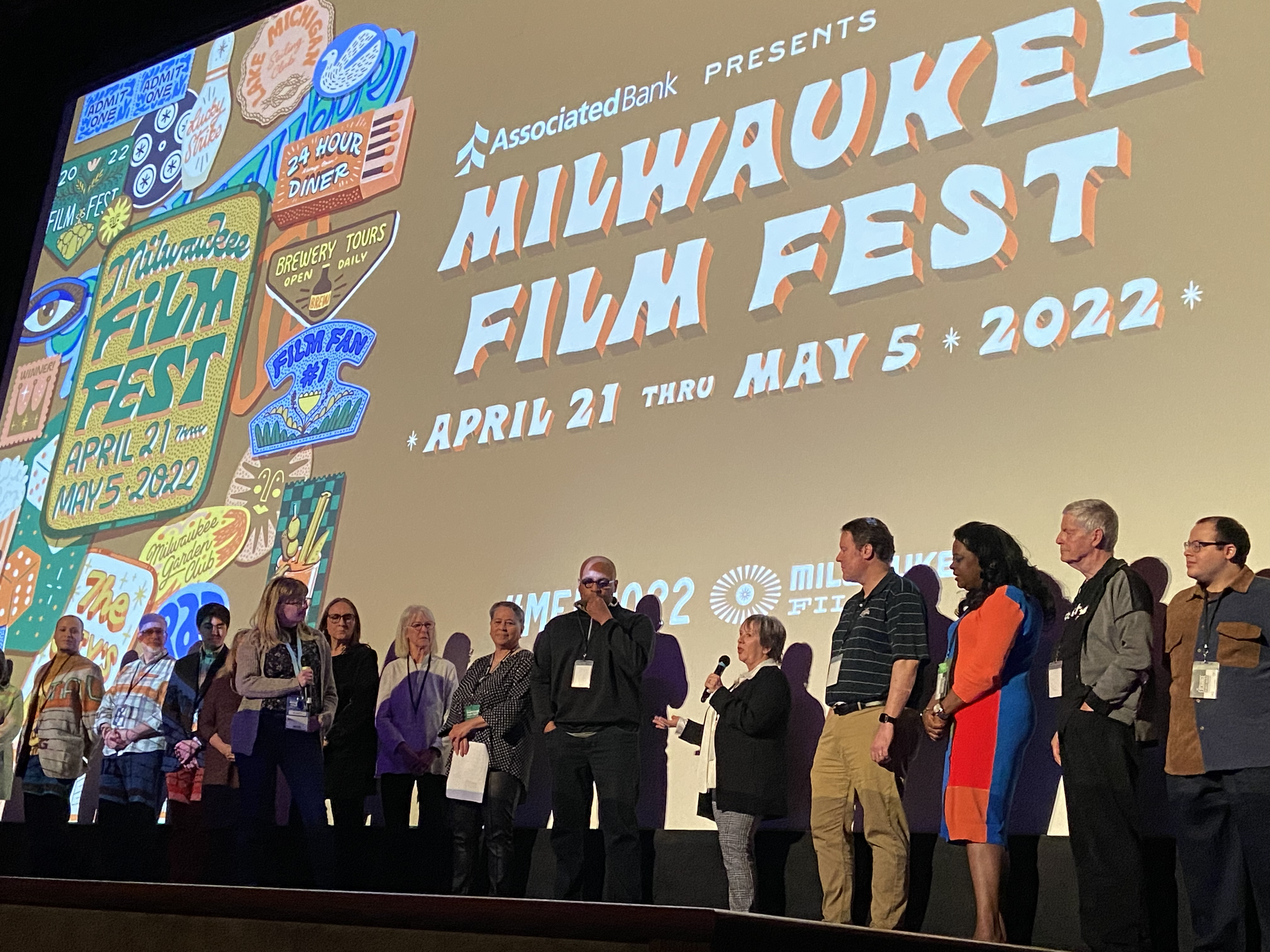
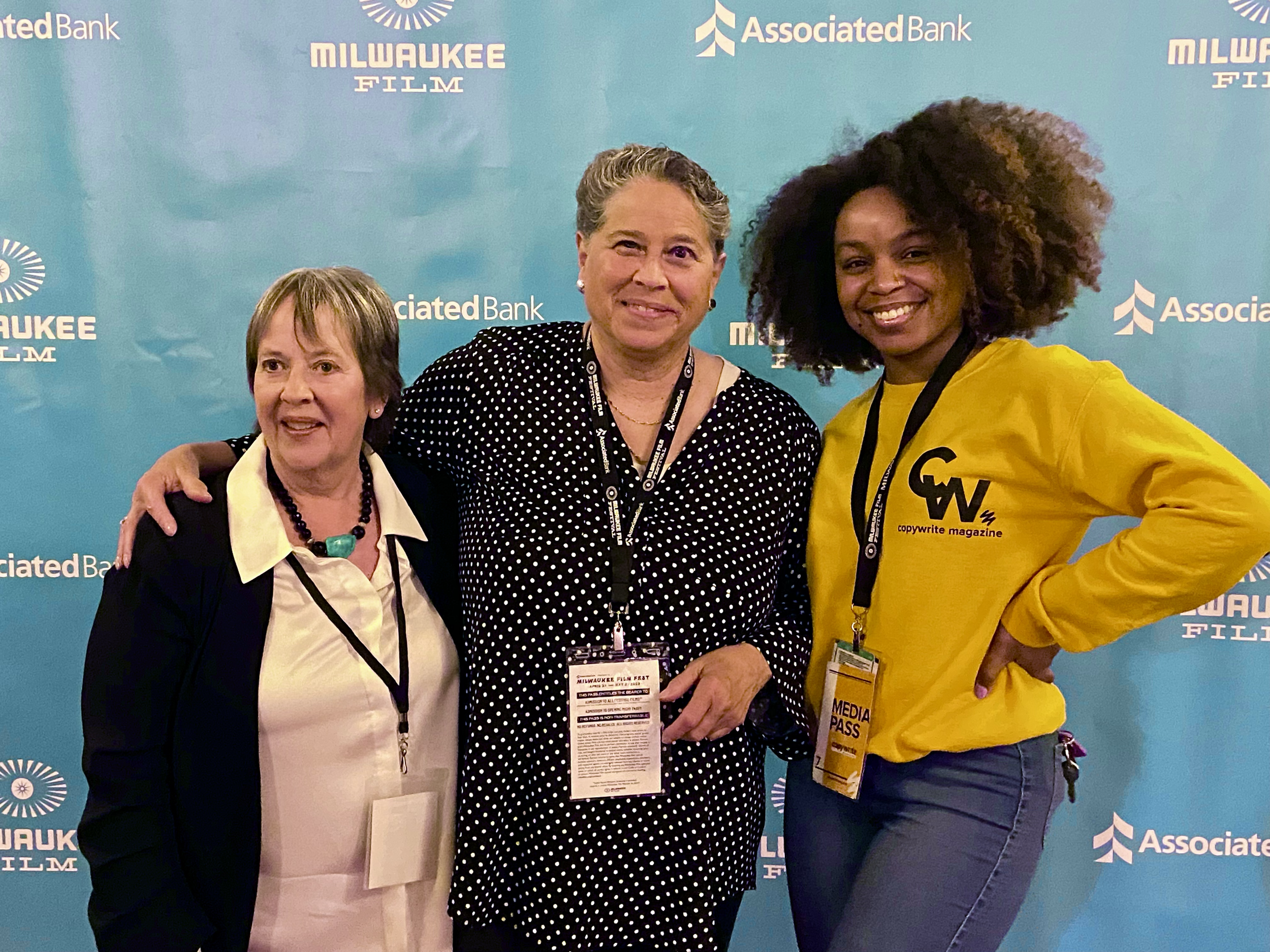
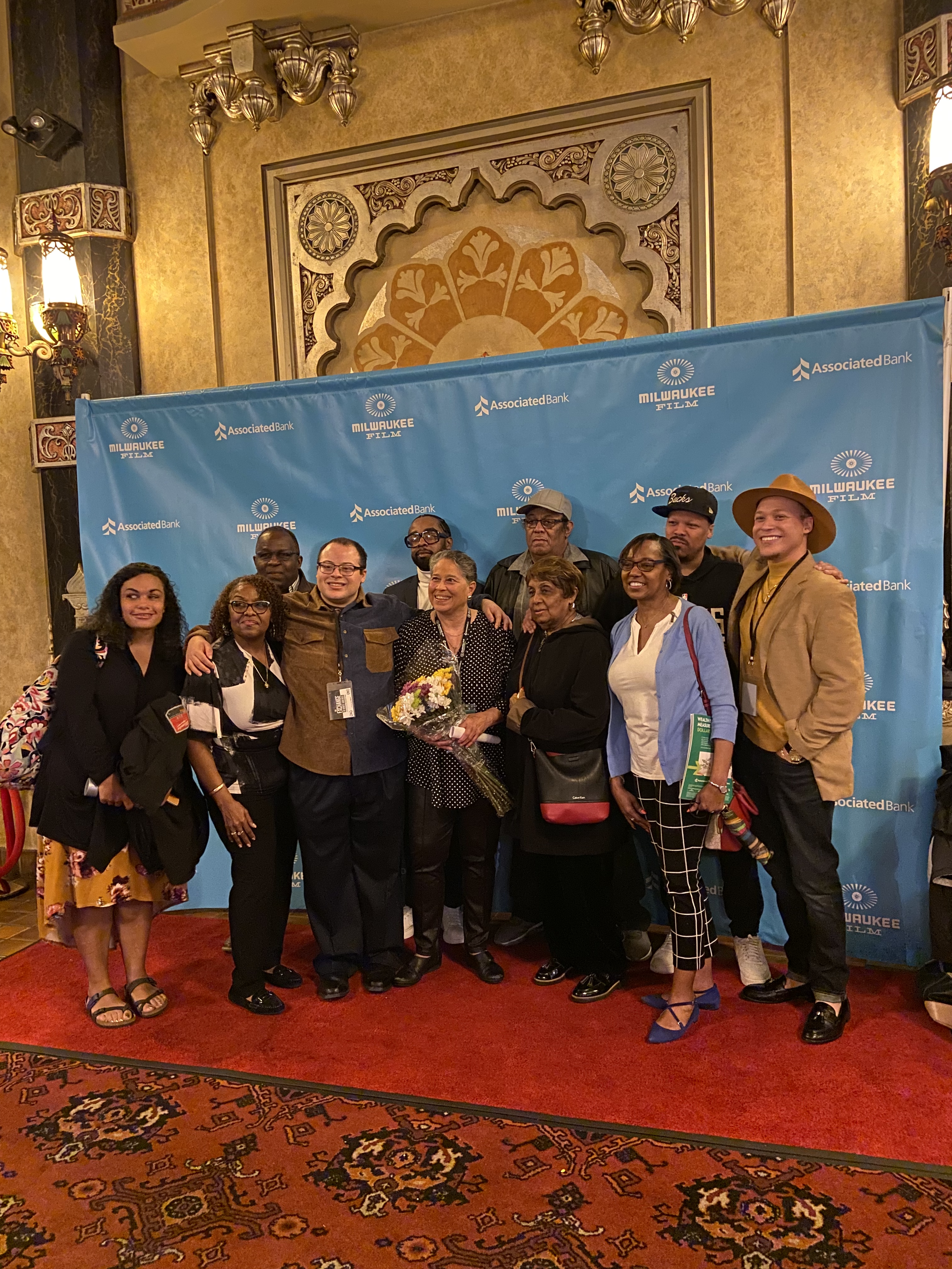
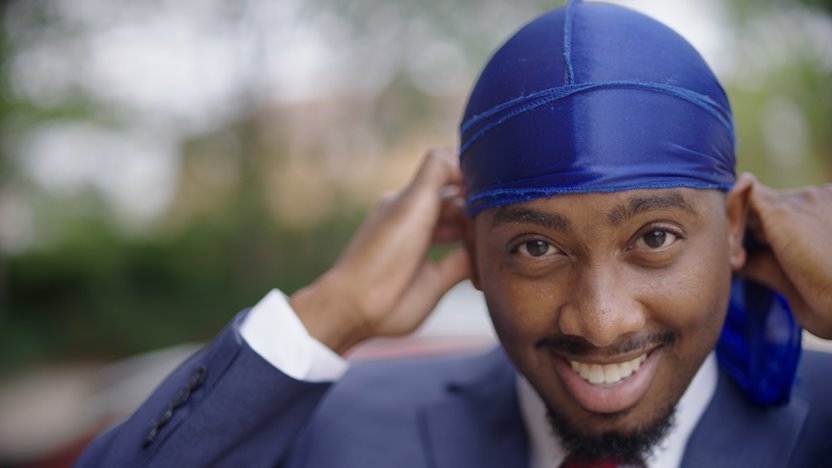
![COPYWRITE MAGAZINE OFFICIAL DROP! Issue 19: Shape Shifting [Place your PRE-ORDER now!]](https://images.squarespace-cdn.com/content/v1/55a6fdb5e4b0ca78813817ae/1649811212325-TQOTNI7J4UUSU6JHWP13/issue+19+cover+art_square+.jpg)





